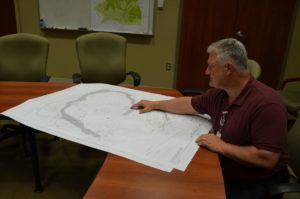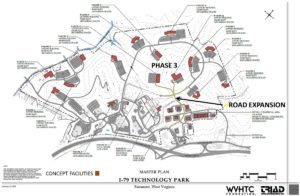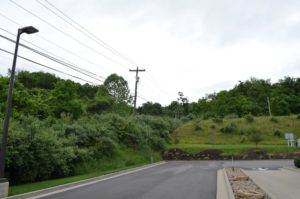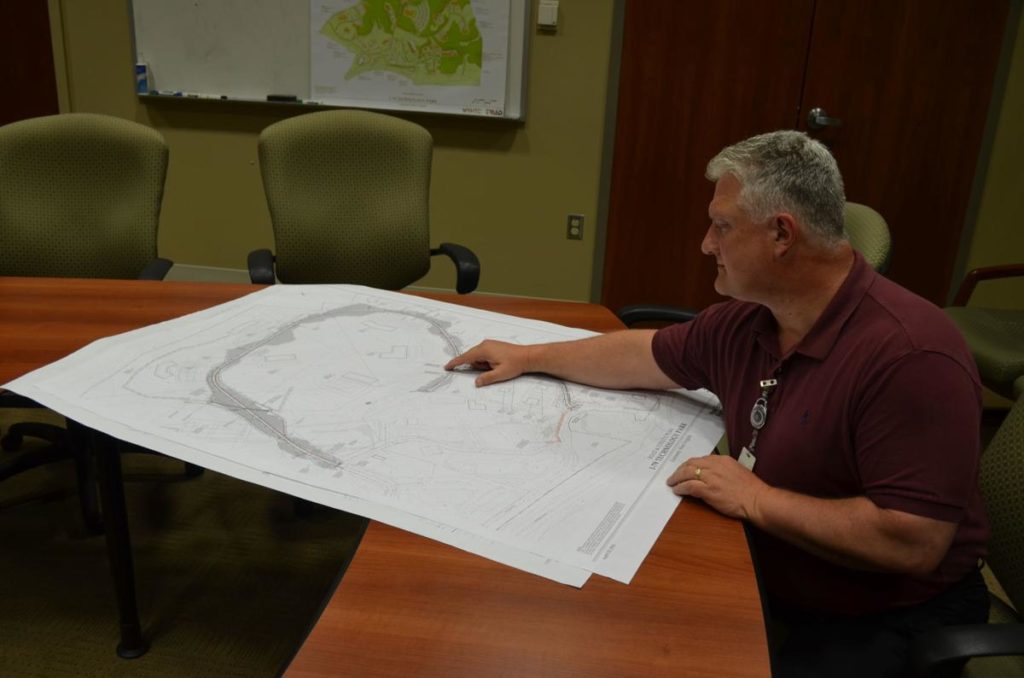
FAIRMONT — Four months after its bankruptcy case was dismissed, the High Technology Foundation is back on track with Phase III of its expansion, as well as the development of other opportunities.
Although the foundation spent 2017 locked in a bankruptcy battle, the case was dismissed in February.
High Technology Foundation Consortium President and CEO Jim Estep said that although some planned projects were slowed or put on the back burner during the bankruptcy, the foundation is finally moving them back up.
“Since the bankruptcy, we’ve actually been on an upwards trajectory,” Estep said. “Of course, there were several projects and initiatives that we had to put on hold during that process, but most of them we were able to revitalize or restart.
“There were a couple of opportunities that we probably lost because of the whole thing, but generally speaking, everything has been trending positively,” Estep added.
Perhaps the foundation’s biggest project right now is expansion of the High Tech Park, which is set to begin Phase III of development this year.
The foundation recently received a grant from the U.S. Office of Surface Mining Reclamation and Enforcement amounting to nearly $4 million.

With this, Estep said the foundation can begin development on the first section of the Phase III expansion, which is set entirely behind the existing park.
The foundation was awarded the grant thanks in part to the Marion County Commission, whose president, Ernie VanGilder, spoke of the importance of the foundation and its growth to the county and region as a whole.
“The most important thing is to see that the High Tech Park continues to develop and give high-paying jobs to the area,” VanGilder said. “Once they get that infrastructure in place, it’ll be easier for businesses to come in here. … It’ll continue to attract more high-tech businesses.”
With the first part of this project, Estep said at least four parcels of land will be made available, which will be given to federal anchors for free as a way to attract more entities to Fairmont. While government entities are the primary suitors for the land, Estep has reached out to other organizations, as well.
“We’ve also offered some of these parcels to Amazon,” Estep said. “If nothing else, it gives us a lot of visibility to Amazon at the higher levels. We’re actually working with Amazon on a couple of fronts, but this puts us into that mix.
“Amazon is always building data centers everywhere anyway, so if I offer them free land to build one, that might be enough for them to say, ‘Sure, we’ll do it there.’”
The expansion and further development of the High Tech Park will, of course, benefit more than just the foundation.
White Hall Mayor Guy Ward is excited for the park to grow, as well, hoping that more businesses mean more commerce in White Hall. In fact, Ward said the town already benefits because some of the park’s businesses, like Azimuth Inc., are already in White Hall.
“A few of the businesses in the park are actually in White Hall,” Ward said. “So that business overflows from Fairmont into White Hall because we’re right up against them. That part of the county and Fairmont is very important to White Hall.”
Even if the businesses themselves don’t fall within city limits, Ward said new businesses in the park, and therefore new workers, are good for White Hall.
“We feed off of each other,” Ward said. “Their employees come over and eat in our facilities and shop in our places. It’s a very important thing.”
Development of the first stretch of Phase III is slated to begin in July, with a projected finishing date of late 2019. Looking further into the future, Estep hopes to fill the parcels of land with successful companies and contract work, similar to what’s going on at the Robert H. Mollohan Research Center.

“Over time, I hope to be able to find funding to finish the whole road system,” Estep said. “You can imagine if we’re able to recruit similar programs (to what we have) and put them in over time (in Phase III), and each one has at least $100 million in contracting, you can see that critical mass. There are so many opportunities here that companies will say, ‘We’ve got to be there.’…
“If we got on a roll and filled up two or three of these pads with $100 million, it would truly springboard this particular sector way up on the list. North Central West Virginia is already one of the most successful areas, if not the most. In the case of Marion County, this could springboard us to the head of the pack, and that isn’t an exaggeration. … There is nothing in the state that comes close to this. Period. Zero. End of story.”
Estep is lobbying members of the state government for more funding for the park, saying that with planning and attention, the High Tech Park could become similar to California’s highly successful Silicon Valley.
“We would hope someday that that layer grows over this and we see some of that,” Estep said. “If you go back to Silicon Valley in the 1940s and ’50s, you’ll see a few things. You’ll see the Moffett Air Force Base, and you’ll see what is today the NASA Ames Research Center and a Department of Energy up and down that region. That’s very similar to FBI and NOAA and NETL.”
While the High Tech Park projects are years away from completion, Estep still has high hopes for the remainder of 2018, as the High Tech Foundation is slated to finish the year in a strong way.
“What I hope we’re able to do is to end the year with a hopefully reasonably stable revenue stream from our research and development work, and maybe realize some extra funding from the real estate down here,” Estep said. “We’re stable now, but I want to get us to a level where we can have more of an impact.”
Staff writer John Mark Shaver can be reached at 304-844-8485 or jshaver@theet.com.


